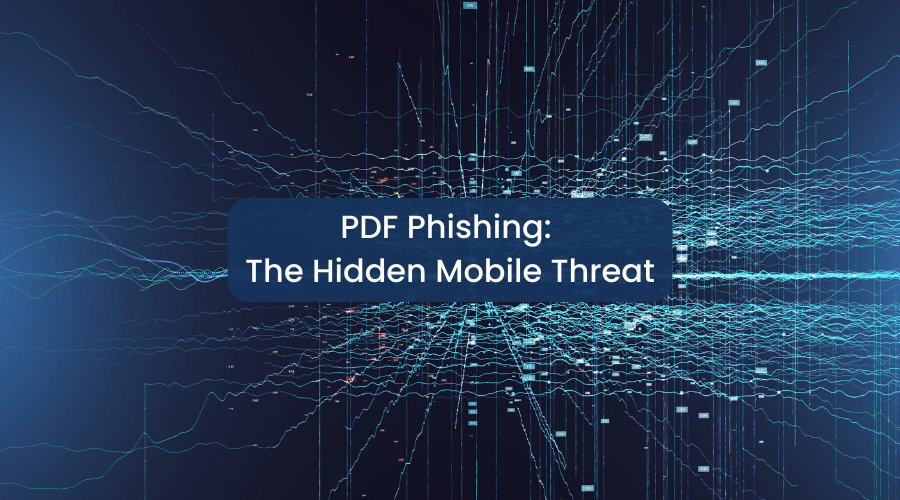Mobile Banking Fraud vs. Mobile Banking Scams: The Risks and Repercussions
In an age where nearly every transaction can happen with a tap on our smartphones, mobile banking has surged in popularity. While this digital progress brings undeniable convenience, it also opens the door to a host of security concerns: banking fraud and scams. For finance and security professionals, understanding the nuances between fraud and scams in the mobile banking sector is critical for protecting customer assets and safeguarding institutional integrity.
Recognizing the Threats: Fraud vs. Scams
Before we can devise robust defense mechanisms, let’s look at the differences between fraud and scams in the context of mobile banking.
Mobile Banking Fraud
Mobile banking fraud typically entails unauthorized transactions executed by exploiting system vulnerabilities or bypassing security measures on the end-user device. Cybercriminals may employ methods like hacking, malware, or phishing attacks to gain illicit access to user accounts. Key indicators of mobile banking fraud include unexplained account transactions, login attempts from unknown locations, or unauthorized changes to account information.
Mobile Banking Scams
Scams, by contrast, are typically characterized by deceiving users into willingly participating in transactions under false pretenses. Cybercriminals often use social engineering tactics to manipulate and trick account holders into voluntarily sharing their sensitive information or money. This is often achieved through social engineering tactics like phishing, vishing (voice phishing), or smishing (SMS phishing).

Repercussions for Victims and Institutions:
The risks associated with both fraud and scams in mobile banking are high. Financial losses are the most immediate and apparent consequences, but there’s more to the story.
For the Consumer
- Financial Loss: Unauthorized transactions can drain funds from accounts, sometimes before the user is aware of any foul play.
- Identity Theft: Scammers may use stolen credentials to commit identity fraud, opening new accounts or obtaining credit in the victim’s name.
- Credit Score Impact: Fraudulent activities can affect the victim’s credit score, making it harder to obtain loans or mortgages in the future.
For Financial Institutions
- Reputation Damage: Incidents of fraud or scams can result in a loss of consumer trust, affecting the institution’s reputation.
- Regulatory Penalties: Failing to protect customers could lead to sanctions and large fines due to regulatory scrutiny.
- Productivity Decline: Addressing incidents involves considerable manpower and financial resources, diverting attention from growth or service initiatives.
Risk Management and Mitigation Strategies
For finance and security professionals, being proactive in fighting both mobile banking fraud and scams is vital. Here are some ways to help protect your institution and customers:
- Educate Your Clients: Regularly update your customers about new types of fraud and scams. Knowledge is the first line of defense.
- Strengthen Security Measures: Implement multi-factor authentication, encryption, and continuous monitoring for unusual transactions.
- Invest in Technology: Build resilient apps and utilize technologies like Zimperium’s Mobile Application Protection Suite (MAPS) with four key capabilities, including Mobile Application Security Testing (MAST), App Shielding, Key Protection, and Runtime Protection (RASP).
- Report and Investigate: Promptly address any reports of suspicious activity and work closely with law enforcement to track down perpetrators.
Financial institutions should have a clearly defined strategy for managing the risk of fraud and scams, accompanied by robust response plans for when incidents occur.
A Way Forward
The financial industry’s battle against mobile banking fraud and scams is ongoing. By enhancing cybersecurity measures, cooperating with legal authorities, and Upskilling dev and security professionals to keep up with evolving threats can contribute substantially to thwarting these threats.
Both individuals and institutions have roles to play in establishing safer mobile banking practices. As technology evolves, so too will the tactics of cybercriminals. Vigilance and adaptability, therefore, must be constant companions in banking app cybersecurity.
Mobile banking shouldn’t be a risky venture. With the right precautions and knowledge, it can continue to offer the convenience and efficiency that users expect without compromising security and trust. Remember, the best risk management in the digital age is a combined effort in education, technology, and policy, making mobile banking a secure pillar of modern financial activities for years to come.
Contact us to learn more or receive a demo.


